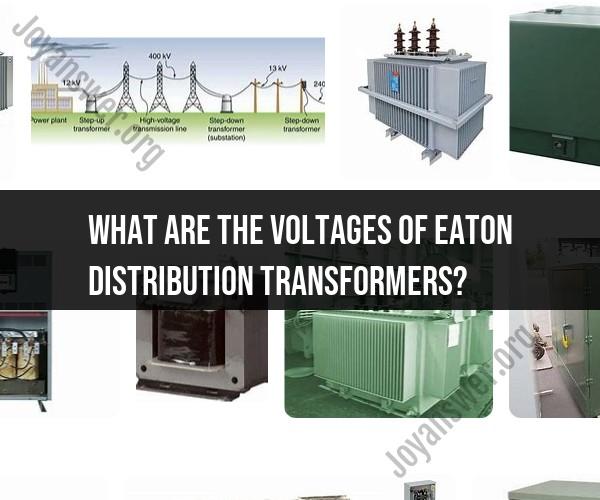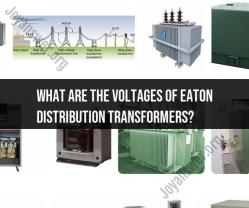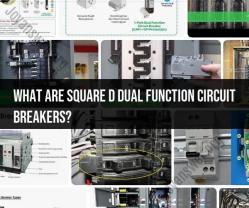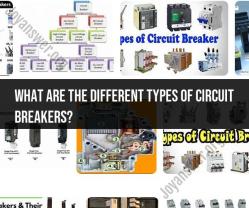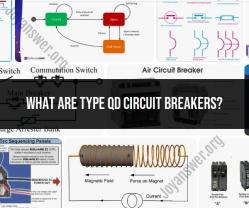What are the voltages of Eaton distribution transformers?
The voltage ratings of Eaton distribution transformers can vary widely depending on the specific application, region, and customer requirements. Eaton, as a major manufacturer of electrical and power distribution equipment, offers a range of distribution transformers with various voltage options. The voltage ratings typically include the primary voltage, secondary voltage, and sometimes tertiary voltage, depending on the transformer's design and purpose.
Common voltage ratings for Eaton distribution transformers in the United States might include:
Primary Voltages:
- 7.2 kV (kilovolts)
- 12.47 kV
- 13.2 kV
- 14.4 kV
- 24.9 kV
- 34.5 kV
Secondary Voltages:
- 120/240 V (volts) - Single-phase residential service
- 208Y/120 V - Three-phase, four-wire wye distribution
- 480Y/277 V - Three-phase, four-wire wye distribution
- 600 V - Three-phase industrial service
These are just some common examples, and Eaton manufactures transformers for a wide range of primary and secondary voltage combinations, including those suitable for industrial, commercial, and residential applications.
It's important to note that the specific voltage ratings of Eaton distribution transformers can vary depending on regional electrical standards and the intended application. Therefore, when selecting or specifying a distribution transformer from Eaton or any other manufacturer, it's crucial to consult with a qualified electrical engineer or technician to ensure that the chosen transformer is compatible with the electrical system's requirements and standards in your specific location.
Voltage Ratings and Specifications of Eaton Distribution Transformers
Eaton Distribution Transformers are available in a wide range of voltage ratings to suit various applications. Common voltage ratings include:
- Primary Voltage: 15kV, 25kV, 35kV
- Secondary Voltage: 120/240V, 277/480V, 480/277V
Additional specifications include:
- Power Ratings: Ranging from 15kVA to 5000kVA
- Insulation Levels: Oil-filled, dry-type, or silicone-filled
- Frequency: 50Hz or 60Hz
Types of Eaton Distribution Transformers and Their Applications
Eaton offers various types of distribution transformers for different applications:
- Pad-mounted Transformers: Compact and enclosed for outdoor installations
- Substation Transformers: Larger units for substation applications
- Pole-mounted Transformers: Designed for overhead mounting on utility poles
- Dry-type Transformers: Suitable for indoor installations where oil-filled transformers are not permitted
Advantages and Features of Eaton Distribution Transformers
Eaton Distribution Transformers offer several advantages:
- High Efficiency: Minimize energy losses and reduce operating costs
- Reliable Performance: Proven designs and quality construction ensure long-term reliability
- Compact Size: Maximize space utilization in electrical installations
- Low Maintenance: Require minimal maintenance and reduce downtime
Selecting the Right Eaton Distribution Transformer for Your Needs
Consider these factors when selecting a transformer:
- Voltage Requirements: Match the primary and secondary voltage ratings to your electrical system
- Power Capacity: Choose a transformer with adequate power capacity for your load requirements
- Installation Environment: Select the appropriate type based on indoor or outdoor installation
- Additional Features: Consider features like noise reduction or special insulation requirements
Maintenance and Safety Considerations for Eaton Distribution Transformers
Regular maintenance is essential for ensuring optimal performance and safety:
- Inspection: Schedule routine inspections to check for leaks, signs of overheating, or other anomalies
- Oil Testing: Test oil quality in oil-filled transformers to ensure dielectric strength and prevent contamination
- Maintenance Records: Maintain detailed records of inspections and maintenance activities
Safety precautions include:
- Qualified Personnel: Only qualified electricians should work on transformers
- De-energize Before Maintenance: Disconnect power before performing any maintenance or inspections
- Personal Protective Equipment: Use appropriate PPE when working on transformers
By following these guidelines, you can ensure the safe and reliable operation of Eaton Distribution Transformers.
